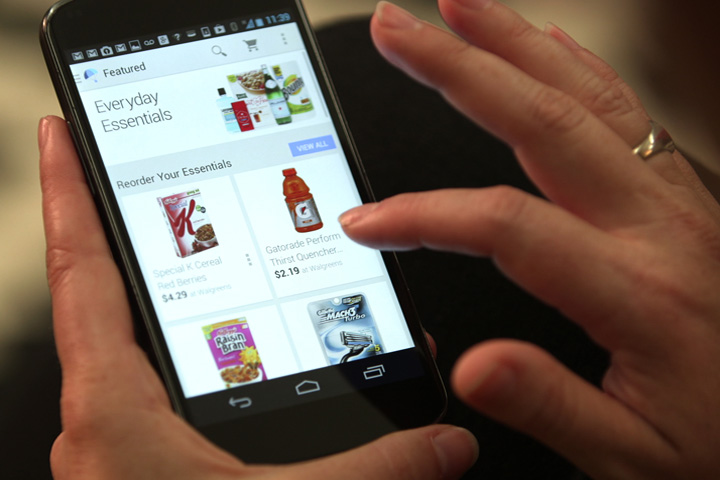Advertisement
The Digitized, Home-Delivered Future Of Our Food Supply
ResumeWill going to the grocery store be history? How the online order and delivery business is reshaping our food economy.

When home delivery was done by horse and wagon, plenty of grocers delivered. When the Internet was young, in the first ‘90s boom, Webvan and others tried and failed to revive all that. Peapod came and stayed. Now, all kinds of players are piling in. Google Express wants to feed you. AmazonFresh wants to fill your fridge. Instacart has shoppers standing by at the store to fill a cart for you and deliver. FreshDirect and Walmart To Go are revving up. Blue Apron has a recipe and ingredients for you. This hour On Point: the food we eat, and the accelerating push to deliver all over.
-- Tom Ashbrook
Guests
Marcus Wohlsen, senior writer for WIRED. (@MarcusWohlsen)
Bob Black, senior advisor to the Boston Consulting Group.
Meg Major, chief content editor at Progressive Grocer. (@Meg_Major)
Mason Arnold, co-founder of Greenling. (@masonarnold)
From Tom's Reading List
Washington Post: Why supermarkets are in trouble -- "For decades, the traditional supermarket reigned as the primary destination for our grocery shopping. It began with A&P, the pioneering grocery company that began to put independent grocers out of business nearly 100 years ago as it fanned out across the country. Today, major grocery chains still capture a huge share of our grocery dollars: Kroger, the nation’s largest chain, raked in $98.4 billion from its fleet of 2,640 stores last year. Safeway pulled in $36.1 billion; Publix, $28 billion."
WIRED: The Next Big Thing You Missed: Online Grocery Shopping Is Back, and This Time It’ll Work — "Online grocery shopping is back. The question is whether it will work this time. Apoorva Mehta thinks so. He’s the founder and CEO of Instacart, a San Francisco startup that will buy all your groceries from your favorite store and deliver them within an hour or two."
TechCrunch: Where Webvan Failed And How Home Delivery 2.0 Could Succeed -- "Webvan is well-known as the poster child of the dot-com “excess” bubble that led to the tech market crash in 2000. Business schools around the nation study Webvan’s overly ambitious rush to the biggest IPO to date in Silicon Valley, as a prime example of what to avoid doing while scaling. Ironically I recall guest teaching the first case study on Webvan at Stanford, the day before the market crash in 2000. While it’s true that the impatience to go public helped steer Webvan off a cliff, the once darling company made two other critical, but often overlooked mistakes."
Coke and McDonald's Take A Hit
Alicia Kelso, senior editorial director of food for FastCasual.com, QSRWeb.com and PizzaMarketplace.com. (@QSRWeb)
QSRWeb.com: McDonald’s 'aggressive change' includes localization, digitization — "McDonald's is scrambling for solutions after its profit fell by 30 percent in Q3. The company turned in yet another disappointing quarter today, driven by a confluence of negative factors working against the business, including a higher-than-expected tax rate, the supply chain crisis in China, store closures in Russia and the Ukraine and a loss of luster in its flagship US system."
This program aired on October 27, 2014.